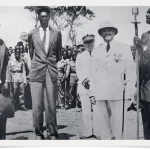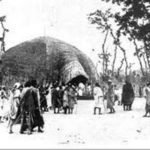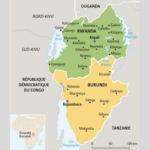The Complex Pattern Of The Political System In Ancient Rwanda
The complex pattern of the political system resulted partly from the large number of office-holders and their stratification in hierarchical ranking and partly from duplication of certain offices and the overlapping and interlocking of the two structures.
In dealing with “delegation and centralisation of political power” Maquet has stressed that “the main factor which prevented local authorities from asserting their independence from central government, was the plural character of the political and feudal organisation” (1962 p.156)
“Engendered by the hierarchic plurality, the mistrust which prevented the subordinate chiefs from uniting against the central government, which led them to spy on each other and to inform the king of anything suspect, was the main check against tendencies towards local autonomy in Rwanda.” (p.157)
Maquet is here emphasising the effect of these elements on the cohesion of Rwanda society within a horizontal territorial framework. These same factors of competition in the struggle for power operating within the complex and overlapping hierarchies of office also made for social cohesion within the framework of social divisions in Rwanda society as a whole. The duplication in the system of offices in the delegated power structure have been described.
Here we have the two parallel hierarchies of the army and administration which interlocked at the level of the hill chief. There was also duplication within the administrative structure in the institution of two chiefs at the district level – the land and cattle chiefs. This duplication of offices not only allowed for checks on the abuse of power but also opened up alternative avenues in the search for justice or favour. In this context it is of importance to consider the dual role of the army chief, not only in his military capacity but also in his role as a protector. Although in no sense can we speak of a separation of judicial power from the administrative power as a whole, jurisdiction over matters relating to cattle lay not with the cattle chief of the administrative structure but with the army chief. Direct jurisdiction over matters relating to land disputes however lay with the land chief of the administrative structure who was regularly a Hutu, but even in these matters an individual could have recourse to his army chief. Moreover as d’Hertefelt has remarked, “since the military structure skipped the territorial divisions of the administrative organisation, an army chief was able to assume his role as protector in a very efficient manner, for the members living in any district of the country were authorised to invoke his protection against their administrative chief” (1960 p,117).
Furthermore, if an army chief consistently failed to fulfill his obligations towards army members, complaints could be made and the king could dismiss or otherwise discipline him.
The fact that the army chief’s position could be threatened by his subjects was of the greatest importance in relation to the execution of his role as a protector and judge. It is evident that it was moreover essential to the prosperity of a country as aggressive as Rwanda that the king could count on his army chiefs having the support of their army members.
It is against this background that we must consider the integration of the kinship structure into the wider political system. With the exception of the Intore, the lineage formed the basic unit of administration within the army. The lineage head apportioned the taxes incumbent on the lineage.
The king and his court were the main beneficiaries of their products and labour which were needed for the royal household, the king’s ritual, ceremonies, his government and his army.
On the other hand it was through the lineage head that was channelled the redistribution of protection, resulting from the king’s ritual, military, judicial and administrative functions and the re-channelling of cattle and their produce.
Furthermore integration into a single system restricted the authority of the lineage head. In inter- or intra- inzu disputes, the individual member had other avenues open to him in seeking justice. It is the army structure, into which the inzu and its members was incorporated which constituted an alternative way, open to all members, of seeking justice in dispute with the administration. This is of special importance in relation to the way judicial procedures operated in Rwanda.
Sandrart- notes of the Rwanda, « On ne peut concevoir que celui qui détient le pouvoir, ne puisse en meme temps punir » (1939 p.118)
This concept is related to the fact that any individual invested with authority could dispense justice among those over whom they had authority. Thus not only did lineage heads at different levels have authority over their lineage members and patrons could settle disputes among their clients but also political authority, wherever existing, superseded the kinship structure as loci of jurisdiction. Courts were therefore hierarchically ranked and ran parallel with the political structure but anyone could have access to a higher court without passing through the lower ones. However some specialisation existed at the-lower levels of political authority in that land disputes were dealt with by land chiefs and that cattle chiefs were competent only in matters of taxation and not with regard to rights over cattle or pasture. No political authority could pass the death sentence without reference to the Mwami. Moreover the king could overrule any decision of the courts and could stop feuding. When he forbade further vengeance his decision was publicly announced by one of his personal special messengers. Disobedience of the king’s will in this regard was punished by extermination of the rebellious family.
As the judiciary was linked with political authority, judicial processes constituted a testing- ground of sociopolitical power in the continuous competition for a place in the political structure. This led to seeking the support of sufficiently important chiefs and patrons in defending one’s case in order to demonstrate one’s strength. Similarly chiefs and patrons would show their position by being accompanied and supported by their following when attending court. This was moreover related to the fact that the judiciary had no coercive power at their disposal for the implementation of their verdict and thus the verdict was directed towards a compromise, i.e. consensus. The greater one’s support the more favourable the verdict was likely to be, the weaker the support the less was the likelihood of a favourable verdict and the easier it was to bring pressure to bear in the implementation of the verdict.
The importance of the army chief, with his local representative the hill chief, as an alternative avenue for justice must be assessed in the light of the overall pattern of judicial processes in Rwanda. The fact that the two district chiefs had only one subordinate chief constituted an instrument of direct and effective control in the hands of the army chief.
The duplication of hierarchies and offices thus made for checks on the exercise of power not only from the point of view of central government but also from the standpoint of the ruled in the maintenance of their rights. The complex pattern of the system containing:
(1) A multiplicity of hierarchically ranked and unequally rewarded offices, which made for competition and strife;
(2) duplicated structures which interlocked at different levels;
(3) the nature of the role of the army chief, as a warlord and as a protector, formed a framework for mobility within the power-holding group and made for flexibility in the system. we can describe the system as flexible in that it allowed for considerable manoeuvering of relationships with officeholders through the exercise of pressure and the access to alternative channels of power. The flexibility therefore relates to the manipulation of relationships by persons lacking power. The processes related to this mobility within and flexibility of the political system constituted an element of social cohesion in maintaining a degree of control over the power of the office-holders and in allowing and encouraging participation in the system at all levels through the exercise of pressures or the offering or withholding of support. The system which provided this mobility and flexibility profited by these built-in mechanisms for its own protection for “the political and clientage structure protected them (the ruled) against an exaggerated pressure which could have had disastrous consequences for the upper caste” (Maquet I961 p. 155).
This observation does not distract from the conclusion we have arrived at as the one does not necessarily exclude the other. However they conflict with Professor Codere’s hypothesis according to which, ”the more powerful oppressed the less powerful or powerless, power was used to the hilt by those who possessed it”
And
“the brutal and relentless struggle for power among the Tutsi kept them harsh and undistracted in their use of power” and further comparing the “protection” element with the 1920 Chicago “protection racket”, (,1962 p.85).
As we have seen when dealing with the Mwami, the queen mother and the biru the impact of certain measures introduced by the Belgian administration disrupted much of the function of central government. Against this background we must now turn to a short survey of those measures affecting the administrative and army structures. Shortly after the arrival of Belgian troops at the time of a great famine and widespread disease, Musinga was forced to sign a decree by which the lower parts of the slopes and the marshes, which had hitherto been reserved for grazing, especially in the dry season, were to be used for agriculture. In 1929 ibikingi land was abolished and so was the army structure including the position of army chief. The duplication of offices was abandoned being replaced by a single hierarchy.
In 1930 a beginning was made with reorganising the boundaries of the chiefdoms and sub-chiefdoms with the aim of drastically reducing the number. The same year also saw a reorganisation of the tax system imposing universal adult male taxation which was no longer administered through the inzu head. Taxation due to the Mwami in goods and labour was replaced by an annual payment of money. In 1953 councils to the various chiefs were established. However at the level of the sub-chief the electoral college was appointed by the sub-chief. The chief’s council was elected by the sub-chiefs and some members of their council.
From what has been said of the army structure it is evident that the abolition of the army structure and the position of army chief constituted an important change in the total system of social relationships relating to mobility within and flexibility of the system. Moreover the army units had provided a framework in which Tutsi, Hutu and Twa had a common membership. In times of war this involved active co-operation and although each group had specific but complementary duties, e.g. in plundering, herding or fighting, it formed a context in which common loyalties in face of a common enemy and sharing a common danger were involved. It moreover constituted a context in which division of labour effectively operated and in which the instrument of coercive power demonstrated itself as a means of protection for the whole community. Although there is insufficient evidence to assume that common membership in army units involved active co-operation between Tutsi, Hutu and Twa it might well have been that on the conceptual level, divisions of labour and co-operation operative in times of war on the basis of protection might not be unrelated to the easier acceptance of the same patterns of division of authority and labour in times of peace.
https://uk.amateka.net/the-complex-pattern-of-the-political-system-in-ancient-rwanda/https://uk.amateka.net/wp-content/uploads/2019/10/missions_medicales.jpghttps://uk.amateka.net/wp-content/uploads/2019/10/missions_medicales-150x150.jpgSocial & cultureThe complex pattern of the political system resulted partly from the large number of office-holders and their stratification in hierarchical ranking and partly from duplication of certain offices and the overlapping and interlocking of the two structures. In dealing with 'delegation and centralisation of political power' Maquet has stressed that 'the main factor which prevented...BarataBarata rpierre@ikaze.netAdministratorAMATEKA | HISTORY OF RWANDA



